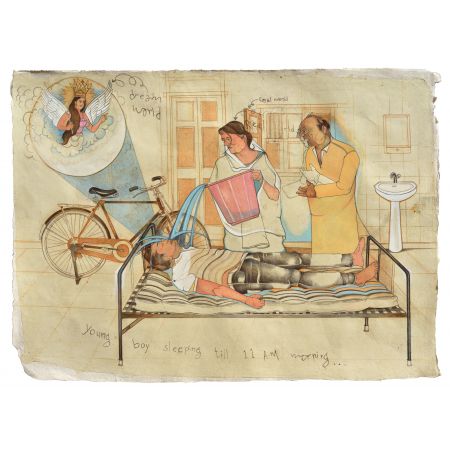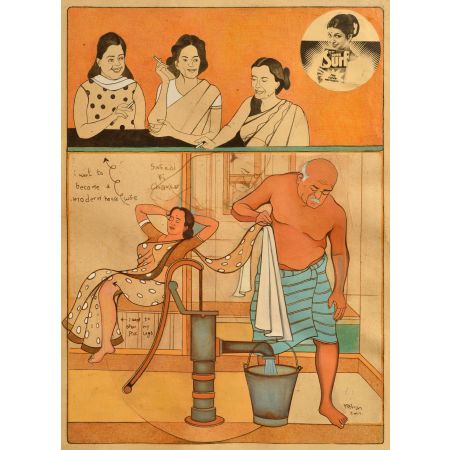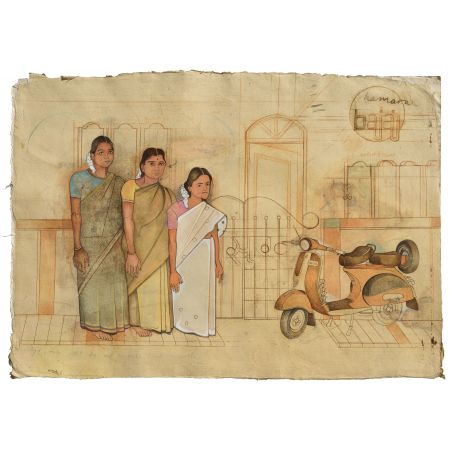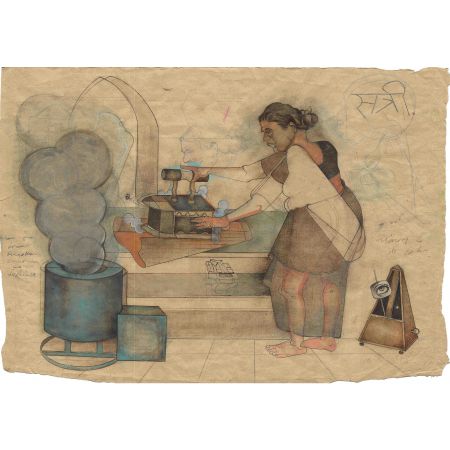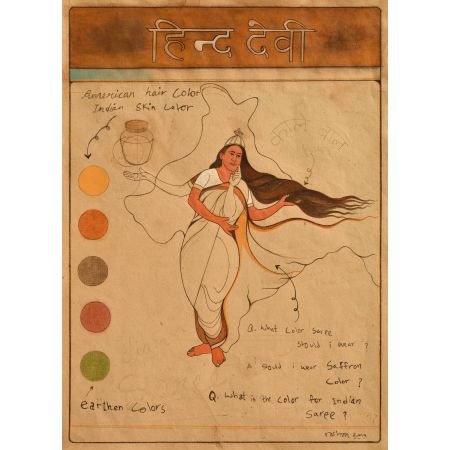'What is the colour of Indian Saree'
I find the day to day mundane life of the middle-class, Indian middle- class to be more specific, very interesting. The incidents that becomes the subject of my work comes from my personal experience of being a young member from the middle class Sindhi family, where I confront with the expectations of the society. My works are based on these observation of middle-class people and family situations and its aspirations.
I take visual reference from the illustrations found in the so called locally published cheap
books, woman's magazines, the newspaper, local signboards, texts from religious/ educational and secular posters, found objects, readymades , popular products and so on. I have an enormous interest in drawing with a peculiar manner in which I strives to attain a sensibility which is tentative at the same time questions the notion of so-called aesthetics or the “good”. I also use text, both borrowed and my own, in my work. The misspellings and inconsistent conjugation indicates that the joke is on the middle class, not the better established and economically more secure anglophone community. Artists that I refer to are Bhupen Khakkar, Robert Rauschenberg, Richard Hamilton, Raoul Hauseman etc.
Though there is a sense of humor in my work, which comes from the kitschy element used to represent the subject, the dilemma and helplessness that I face in real life is not necessarily so. However I aim is to portray my subjects without stripping their middle class sensibility, concerns and at times their garishness; and that adds the humor. Even when my subject is a elite woman, I portray her through a middle-class's eyes. Popular culture and consumerism, stereotypes has also been part of my work. I also tend to have a formalistic approach while working and have let my formalistic concerns develop into a work itself.
My display is mostly a clutter like arrangement of works, texts and sometimes found objects and readymades which I find relevant. It can be on the wall or the floor, which somewhat looks like objects displayed in a flea market.
An excerpt from an article written by Ryan Holmberg which I would like to add..
"....that overtly good kids act like funny automatons that led Chhabria to dovetail the trope of "ideal boy" with a Dada-inflected parody of Indian consumerism .....Chhabria's framing of Pop as an extension of Dada reflects a keen understanding of art history; it also reflects social conditions in India."
Return Policy: Available
Authencity Certificate : Provided
Shipping Duration: Within 7 days In India.
Shipping charges: Free Across India.
International Shipping at nominal charges. Shipped Rolled.
International Shipping at nominal charges. Shipped Rolled.
₹70,000



